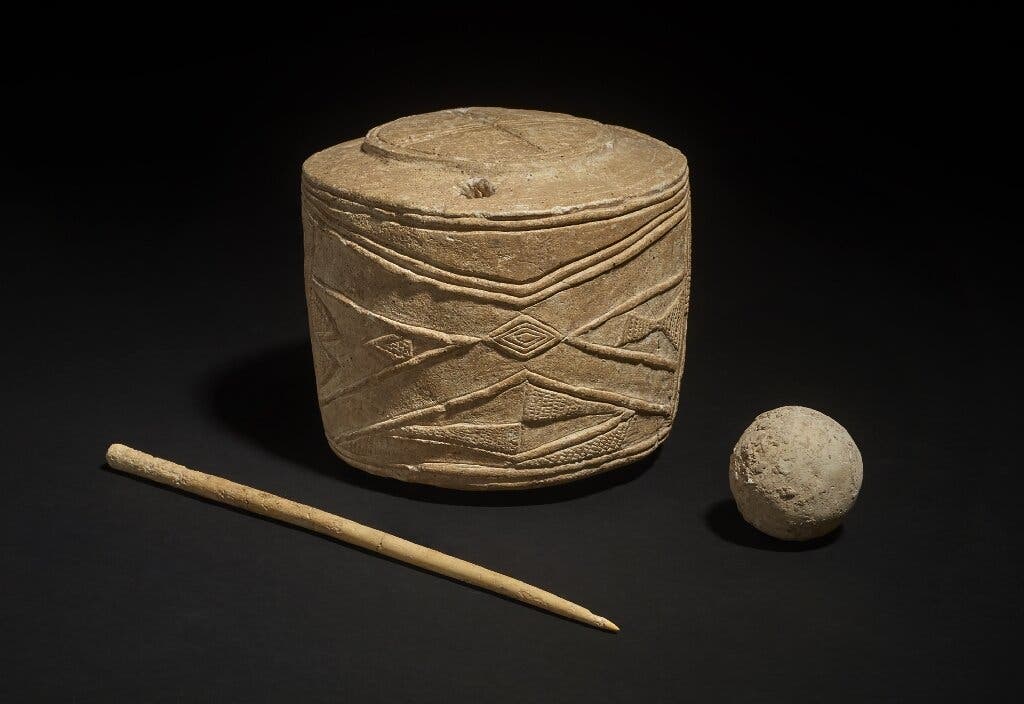One of the “most significant ancient objects ever found in the British Isles”, a stone-carved drum, will be put on display at the British Museum starting next week.

Art is hard to define, but it can be very easy to recognize. A 5,000-year-old drum, carved from a block of chalk uncovered near Yorkshire in northern England in 2015, definitely seems to fit the bill. According to Neil Wilkin, the curator of the exhibition “The World of Stonehenge” at the British Museum, this is one of the most remarkable archeological discoveries ever made in Britain.
The piece will go on display at the exhibition, which opens February 17, for the public to enjoy and discuss.
Stone and roll
“This is a truly remarkable discovery, and is the most important piece of prehistoric art to be found in Britain in the last 100 years,” said Neil Wilkin.
According to the Museum, this drum is one of the most significant objects ever discovered on the British Isles. By all indication, it is not a functional musical instrument — as it is carved from a single piece of chalk and has no internal resonance cavity — but was, rather, created as a talisman or artistic sculpture.
The drum was discovered in the grave of three children that were buried close together, either touching or holding hands. It was placed above the head of the eldest child, together with a chalk ball and a pin made from polished bone. The burial site lies around 240 miles (380 kilometers) from Stonehenge near the village of Burton Agnes.
It is one of only four known examples of its kind. Known as the Folkton Drums, all three are part of the British Museum’s collections. The other three were discovered in 1889 at the burial site of a single child around 15 miles (24 kilometers) from the site ar Burton Agnes. They are currently on loan to the Stonehenge Visitor Centre.
These drums are “some of the most famous and enigmatic ancient objects ever unearthed in Britain”, according to the Museum, with the most recent one “of the most elaborately decorated objects of this period found anywhere in Britain and Ireland”.
Radiocarbon dating places the creation of the drum between 3005 and 2890 BC, the same time as the first construction phase of Stonehenge. As such, it provides invaluable cultural context regarding that time.
“Analysis of its carvings will help to decipher the symbolism and beliefs of the era in which Stonehenge was constructed,” said Wilkin.
These drums showcase the fact that communities across Britain and Ireland maintained quite significant levels of contact and communications, as they shared artistic styles of expressions and, as suggested by the discovery of these objects in burial sites, spiritual beliefs.
The drums are all sculpted out of local chalk and adorned with stylized human faces and geometric patterns. A pair of concentric circles with pairs of eyes on each drum resembles a human face.
While it is still unclear what the purpose of these drums were — ritual purposes are definitely involved here — archaeologist Anne Teather notes that they may have been teaching aides or items meant to maintain standardization of measurement. She notes that the circumferences of each of the drums form whole-number divisions of ten long feet (ten, nine, and eight times, respectively), which was a unit of measuring distance in wide use in stone-age Britain.
While it’s very likely that other such drums were fashioned from more accessible and more easily processed materials such as wood, these examples were carved out of stone (likely for ceremonial purposes), which helped them survive through the ages.






